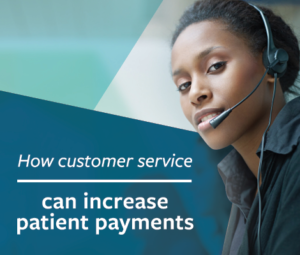Why Healthcare Needs to Adapt to Consumer Expectations
Consumers know that we live in a world that’s subject to change.
 Take home repairs for example. Everyone who owns a home understands that one repair often and unfortunately leads to another. You get your furnace serviced for $75 and find that a $500 part needs to be replaced.
Take home repairs for example. Everyone who owns a home understands that one repair often and unfortunately leads to another. You get your furnace serviced for $75 and find that a $500 part needs to be replaced.
The hassles of bids, estimates and surprise expenses led me to put off roof repairs for too long. But when the roof started leaking at the slightest California drizzle, I found the highest rated roofer in my area online, got an estimate for repairs, and gave the go-ahead for the work.
About 30 minutes into the job, I got a call from the professional roofer—the wood beneath the shingles was ruined. It would add $1,200 to the repairs. When I asked why that cost wasn’t included in the initial estimate, I was politely reminded that I had been warned about the possibility of additional costs.
And when I asked why the price was so high, what I got was modern, high-quality customer service: on-the-spot pictures of the rotten decking, an email with the price breakdown, a follow-up phone call to if I had any billing questions, and pictures of progress as the repairs went on. Actual pictures! In the end, I was completely comfortable paying a higher fee because I understood the real value of the service. Best of all, I was kept informed throughout the whole episode as I bounced from airport to rental car.
So, if a local roofer with a handful of employees can offer omni-channel customer service and high-level billing support, why can’t a multimillion-dollar hospital with teams of representatives do the same?
That’s exactly what patients ask themselves as they shake their heads in frustration. They don’t care about the complexity of medical claims. In fact, 61% of patients find themselves surprised by out-of-pocket expenses in large part because they were never told that pre-service estimates aren’t 100% accurate or didn’t get an estimate in the first place.
In contrast to the customer billing support I was offered, consider if I had only received a roofing bill in the mail that was $1,200 higher than the original estimate 90 days after they did the job. I would have assumed that I was being ripped off, disputed the charges, and most likely left negative reviews online so others could avoid a similar experience.
It’s no different when a patient receives an unanticipated escalated medical bill—which is so often the case. They become suspicious of the additional charges, question their own financial liability, and delay payment or refuse to pay altogether. Even if the patient is happy with their medical care and would willingly accept additional fees, they may simply assume that their insurer or provider has made an error.
Proactive outreach to explain balance changes does more than prove to the patient that they are valued and respected—it clarifies the quality of the care received, expedites payment, and inspires customer loyalty. As 57% of patients say they received medical bills that were confusing, billing simplicity is a worthwhile goal for every hospital. Utilizing the patient’s preferred methods of communication makes the process easier and far more patient-centered. As with every other industry, consumers want to interact with businesses the way they prefer! Text, email, phone, etc.
From the ease of online shopping to service-oriented local businesses, patients have far higher expectations for customer service than the average hospital gives. As patient payments become more and more critical to the revenue cycle, smart health systems will adapt and prosper. Those who don’t—won’t.
TransUnion Healthcare Survey Finds Cost Transparency is a Top Priority for Patients, http://www.transunioninsights.com/healthcarecostsurvey.
2014 Harris Poll survey of 2,016 American adults, conducted on behalf of NerdWallet Health, https://www.nerdwallet.com/blog/health/managing-medical-bills/medical-bills-debt-crisis





